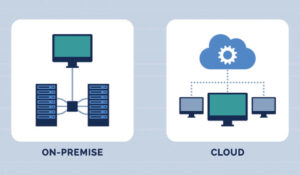Jeremy Payne of Enghouse Interactive shares some of his top tips for moving your contact centre to the cloud.
As you move your contact centre to the cloud, or implement cloud technologies, there are a wide range of issues you need to consider to make sure that the process is a success and that you maximize the opportunities that the cloud will bring.
Here we provide some useful tips to ensure your journey to the cloud runs smoothly.
1. Think of Your Cloud Contact Centre as a Differentiator Helping You Attract and Retain Employees
In the past, technology was viewed as a utility – something you needed to keep employees ‘up and running’ and working for your business.
Now with the move to digital and the enabling power of cloud, it has become a differentiator: a way to attract and retain talent. That should be a guiding principle as you migrate to a cloud contact centre.
Focus on how cloud can drive enhanced productivity by enabling remote and collaborative working and deliver operational efficiencies by providing the computing power to fuel new AI-driven and data analytics capabilities.
2. Engage Fully With All the Stakeholders Before You Start
Before you implement a new cloud contact centre or initiate any migration, ensure you engage fully with every stakeholder.
You need to work out what business processes are associated with customer engagement and check that you can adapt or tweak the solution as required to meet the business needs.
Ideally, all stakeholder groups should be involved in the process right from the start. That way, you can be confident the implementation will meet their business requirements both now and in the future.
3. Check That Your Provider Can Deliver Integration Cost-Effectively
When you move your contact centre from on-premise to the cloud, you need to confirm that any interfaces to CRM or other third-party applications can move with you and that your chosen solutions provider can deliver the necessary integration without significant costs or having to re-engineer services.
It’s a mistake to assume most vendors can achieve this easily. They can’t. It requires a lot of effort. And it is therefore a good idea to seek proof points from your intended provider that they have the experience in carrying out low-cost, high-value integration that works successfully.
4. Provide an Ergonomic User Interface – It’s Key for Your Agents and Your IT Team
Before you move your contact centre to the cloud, consider the importance of providing a wide pool of distributed agents with an ergonomic graphical user interface (GUI).
The GUI should be easy to install on demand as interaction levels fluctuate naturally, and also intuitive to use. This simplicity is important. The GUI should not require intervention by any IT person before it becomes functional.
One of the fundamental benefits of moving to the cloud is the reduction in IT burden, and if the department needs to get involved to “add an agent”, that key benefit is compromised.
5. Choose a Provider That Offers a Genuine Multi-Tenant Environment
Many providers claim to offer a cloud contact centre proposition. However, many simply virtualize an instance of what was traditionally deployed as an on-premise solution and offer a commercial subscription package around it.
However, when that provider has 20 or so instances, they’ll pass on the cost of ownership to their customers.
Instead of managing, operating and upgrading a single platform with a single set of tools and skills, the provider will need to manage, operate and upgrade multiple instances of it, with the associated cost overhead.
Consistent and accurate communication of future roadmap features quickly goes ‘out of sync’ as different versions are implemented.
To avoid these difficulties and benefit from working in the scalable, flexible and cost-effective customer service environment, you need to be confident that you are working with a provider who operates a genuinely multi-tenant solution.
6. Ensure Your Approach Is Future-Proofed
Technology is evolving all the time and the business requirements of any cloud contact centre are likely to change rapidly too. You need to think about what future proofing really means for your business.

Jeremy Payne
- Will you have to pay for and/or wait for long periods for any technological changes to be made?
- Does your provider track the market and make significant investments in new technology and in R&D?
- Will integration be easy with your existing and likely future infrastructure?
Having these questions continuously in mind should help secure a successful outcome, keeping you ahead of the competition.
Author: Robyn Coppell
Published On: 23rd Jun 2020 - Last modified: 14th Jun 2024
Read more about - Guest Blogs, Enghouse Interactive, Jeremy Payne





































